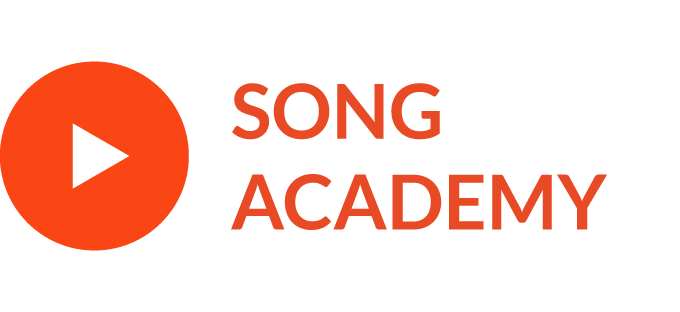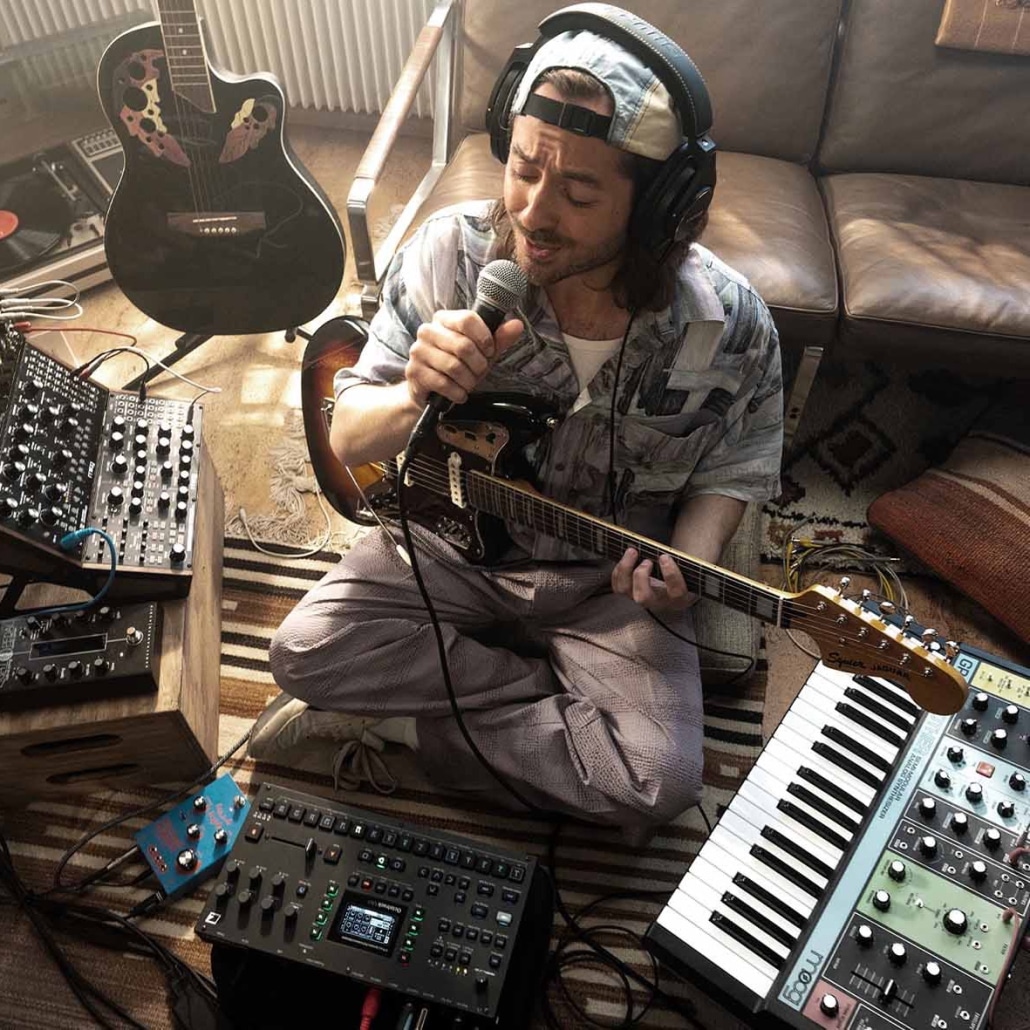Recording Your Songs To Enter Them Into The Young Songwriter 2024 Competition
As a songwriter, learning how to record and produce your own songs is a great skill to have. It can be as easy as singing your song into your phone and sending this recording! Shure have written a special interactive guide for us and here are some examples of home studio setups, with 1 being the most simple and 5 being the most complex.
Shure’s Interactive Guide
Shure, a lead sponsor of The Young Songwriter 2024 competition have written a special interactive guide for us, containing songwriting tips from real-life songwriters, microphone info as well as some recording tips. Winners of SAYS24 will receive a legendary Shure SM58 microphone and new MVX2U interface (to connect your mic into your computer with an XLR to USB connector).
https://content.shure.com/story/says24/
Home Studio Setups
- The most simple – recording yourself performing your song using either the voice memo app on your phone or a tape recorder to capture the raw performance as it sounds in the room.
- Using a USB microphone with your computer to capture your performance, possibly adding a few simple effects afterwards to enhance the recording.
- Using music production software/a DAW to record the individual parts of your song separately. For example, a USB microphone and an adaptor/cable to connect a guitar/keyboard/MIDI keyboard directly into your computer, resulting in multiple recorded tracks that will be mixed together.
- Music production software/DAW using an audio interface, allowing for multiple instruments/voices to be recorded at once either by plugging microphones into the XLR inputs or jack leads into Hi-Z inputs. This can be combined with multiple virtual instruments controlled via MIDI in the DAW.
- A full studio setup, including 16 or more input channels, giving you the ability to record several instruments with multiple microphones, including live drums, live piano, guitar amps and strings, at the same time. This setup may also include a MIDI interface in order to control several synths and/or drum machines at the same time. This would also usually be accompanied by a monitoring setup that allows for multiple headphone mixes for different musicians.
Some of the most well known brands for home studio setup audio interfaces include Focusrite, Universal Audio, M-Audio and Presonus. The pros and cons will depend entirely on your needs, but it’s a good idea to research every bit of kit as thoroughly as possible as they all have their own unique selling points. As for microphones, the most well known brands are Shure, Rode, AKG, Audio Technica and Sennheiser. As with the audio interfaces, it’s a good idea to research microphones, and it may be more important as different microphones work better for different sources. A microphone that is good for vocals, may not be great for mic’ing a guitar amp, for example.
Why use a USB microphone? The first step up from using your phone to record voice memos would be a USB microphone. These range in price and quality, but typically will sound better than a phone microphone or standard computer microphone. You can use it to record the different parts of your song in separately, then mix them together in a DAW, which brings us to the next question…
Why use a DAW? A Digital Audio Workstation, or DAW, is a piece of software that allows for the recording, layering and processing of audio files. It is the heart of most modern setups, and DAWs are a cheaper, efficient alternative to expensive large format mixing consoles. Some bigger studios may still use traditional style consoles, but many will still record into a DAW via an audio interface instead of recording to tape.
Why use an audio interface? Audio interfaces have many benefits over USB microphones or plugging a microphone directly into your computer. First of all, they are dedicated units that are built to record audio at a high quality without introducing unwanted noise or artefacts that you might get when using USB microphones. Most interfaces also have independent gain controls so you can set the gain of your microphone and get a comfortable level using a physical control on the interface itself. Audio interfaces can also have multiple inputs, something which isn’t usually possible (or is very difficult) without using one, so they increase the possibilities of your studio with each extra input. Lastly, most interfaces use XLR and jack inputs, that allow you to easily plug in a variety of instruments or microphones, including guitars, keyboards, drum machines. If the interface has a phantom power feature, it means you don’t have to have an extra phantom power supply for your microphone.”









